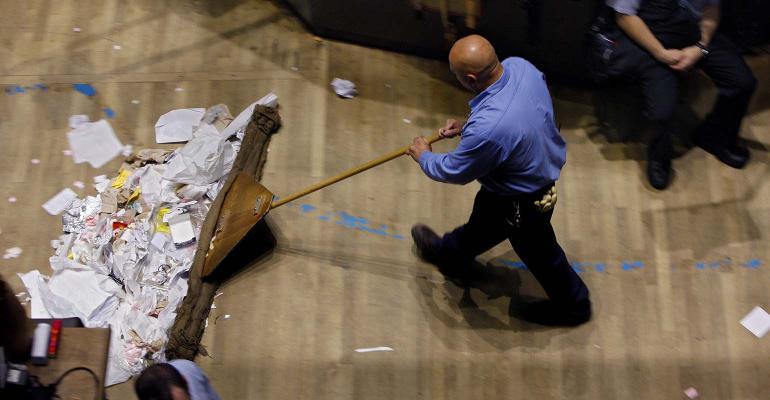(Bloomberg Opinion) -- Remember when SPACs were the solution to a problem? It was 2020, and a lot of companies wanted to go public, but an initial public offering takes time and a lot of paperwork. Blank-check companies, on the other hand, were tailor-made to fast-track a company to public investors. Obviously, things didn’t work out. Bad companies were taken public by even worse promoters at valuations that seemed outrageous then and tragic today.
Yet as unscrupulous as many of their promoters were, SPACs were also a victim of timing. Their collapse occurred at a time of historically cheap debt, wide-open IPO markets and competitive takeover auctions. Private companies had many options, a fact reflected in just how awful many of the ones that went the SPAC route were — taxis that flew, space rockets that didn’t and a lottery runner that came up empty, among them.
The collapse put private companies looking for funding back where they started, but in a market of few options. Debt is expensive; IPOs aren’t happening; and buyers are scarce. These are perfect market dynamics for SPACs. The challenge is overcoming the natural skepticism likely to greet any entity that even looks like a SPAC today.
Martin Franklin is giving it a try. Despite being one of the most prolific SPAC dealmakers of the last 20 years — he has done eight — Franklin was a prominent critic of the SPAC boom, warning that there were too many deals being done too quickly and with companies that had no business being public. He was mostly right.
His new vehicle, Admiral Acquisition Ltd., is like a SPAC in that it is a pool of capital, or a blank-check company, hunting for a real business to buy. But the structure incorporates Franklin’s critique of SPAC market mania. There are no free shares for the promoters, removing one of the most egregiously abused aspects of the SPAC model. Investors also don’t have the right to redeem their shares rather than back the negotiated deal. This is important considering what happened toward the end of the SPAC boom.
As disillusionment with the model increased, promoters suffered brutal jiltings. And the impact for those companies that had agreed to the deal has been even worse. Consider BuzzFeed Inc. The digital publisher agreed to go public in a 2021 SPAC deal that valued it at $1.5 billion, but just 5% of the investors decided to go with the deal, meaning BuzzFeed received a fraction of the money it was counting on. The site announced last month that it was shutting down its news operation.
The fallout of such reversals has, understandably, made potential targets think twice about committing their future to a SPAC or similar vehicle. In the first quarter of 2021, 295 went public. There have been only 14 so far this year. Such a decline is hard to reverse, and raising new money from investors for a model so out of favor won’t be easy.
But timing is critical in the business of making money. Nathan Rothschild, the 18th century British banker, advised buying when there’s “blood in the streets, even if the blood is your own.” Blank checks left a gore-fest. Yet for those still able to write one, there may be opportunities to mop up.
More From Bloomberg Opinion:
- $27 Billion Deal Shows SPAC Silliness Is Back: Chris Bryant
- Ex-SPACs Face Hellish Battle to Avoid the Abyss: Chris Bryant
- Matt Levine’s Money Stuff: SPACs Want Their Money Back
Want more Bloomberg Opinion? OPIN <GO>. Or you can subscribe to our daily newsletter.
To contact the author of this story:
Ed Hammond at [email protected]





